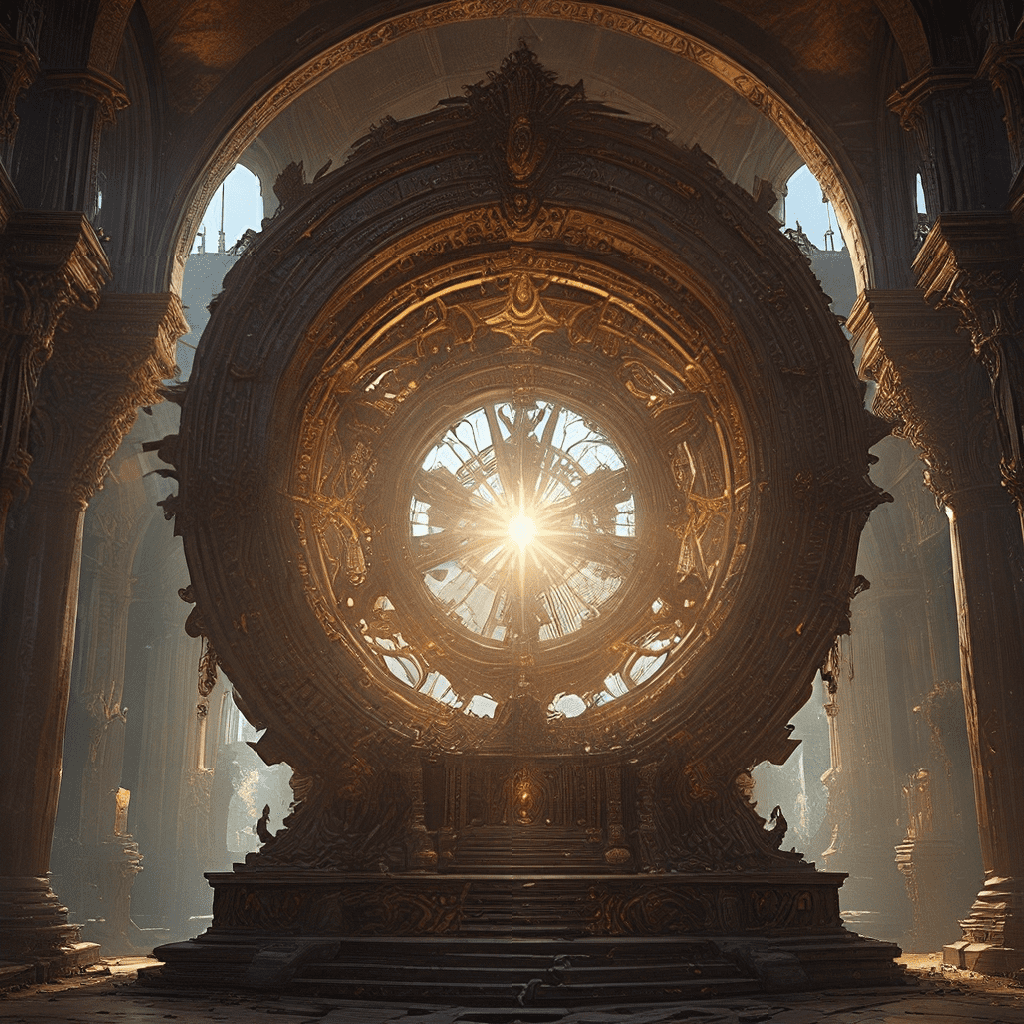The Divine Architect: Exploring the Shaping of the World in Egyptian Mythology
In ancient Egypt, the world was seen as a carefully crafted masterpiece, a testament to the power and wisdom of the gods. The concept of a “Divine Architect” permeates Egyptian mythology, shaping the narratives about creation, order, and harmony. This article delves into the fascinating world of Egyptian creation myths and explores the role of the divine architects in bringing the cosmos into being.
1. The World as a Cosmic Order
Egyptians believed that the universe was a divinely ordained order, a harmonious balance between opposing forces. This cosmic order, known as “Maat,” was essential for maintaining stability and prosperity. The gods, as the architects of this order, played a crucial role in ensuring that the universe functioned smoothly.
2. Atum: The Self-Created God
One of the most prominent figures in Egyptian creation myths is Atum, the self-created god. In one account, Atum emerged from the primordial waters, Nun, and simply by uttering his own name, he brought forth the world. He was a powerful deity, often depicted as a self-sufficient being, capable of creating all things through his own will.
3. The Ogdoad: The Primordial Forces
Another important creation concept involves the Ogdoad, a group of eight primordial deities. These deities represented the fundamental forces of creation, such as darkness, light, chaos, and order. They existed before the world and were responsible for bringing about the initial conditions for the universe to form.
4. The Ennead: The Heavenly Family
In the city of Heliopolis, a different creation myth emerged centered on the Ennead, a group of nine gods. This family of deities included Atum and his descendants, such as Shu (air), Tefnut (moisture), Geb (earth), and Nut (sky). The Ennead represented the key elements of the cosmos, demonstrating how the world evolved from a chaotic state to a structured realm.
5. Ptah: The Divine Craftsman
Ptah, the god of crafts, was revered as a divine architect. He was believed to have created the world through the power of his thoughts and words. Ptah was often depicted holding a potter’s wheel, symbolizing his ability to mold and shape the universe. He exemplifies the idea that the world was a carefully crafted creation, a product of divine artistry.
6. The Creation Myth: From Chaos to Cosmos
In many Egyptian creation myths, the universe emerges from a chaotic state. This primordial chaos, often represented by the waters of Nun, is gradually transformed into a structured and ordered world through the actions of the gods. The emergence of land, sky, and celestial bodies are portrayed as acts of divine creation, showing the gods taking an active role in shaping the cosmos.
7. The Role of the Sun God Ra
Ra, the sun god, plays a significant role in many Egyptian creation narratives. He is often seen as the source of light and life, bringing order and warmth to the world. Ra’s journey across the sky each day symbolizes the continuous cycle of creation and renewal, highlighting the importance of the sun in sustaining life.
8. The Cosmic Egg and the Primeval Waters
The concept of a cosmic egg, containing the potential for all creation, appears in some Egyptian myths. This egg, often depicted as floating on the primordial waters, represents the initial state of the universe, a seed from which everything originates. The breaking of the egg symbolizes the birth of the world and the separation of the elements.
9. The Importance of Maat: Cosmic Harmony
Maat, the concept of cosmic order and harmony, is a central theme in Egyptian mythology. The divine architects, through their actions and creations, strive to maintain Maat. The preservation of this balance is crucial for the well-being of the world and its inhabitants. Disruptions to Maat are seen as contributing to chaos and instability.
10. The Divine Architect in Modern Interpretations
Today, the concept of the Divine Architect continues to inspire awe and wonder. While the specific details of Egyptian creation myths may differ from modern scientific explanations, they offer a glimpse into the human desire to understand the origins of the universe and the nature of creation. The timeless themes of order, harmony, and divine artistry remain relevant and resonate with people across cultures and time.




